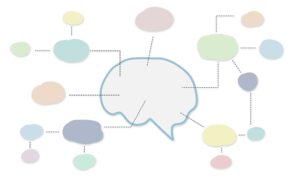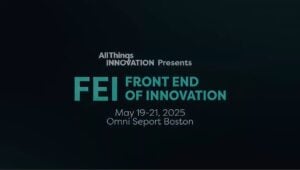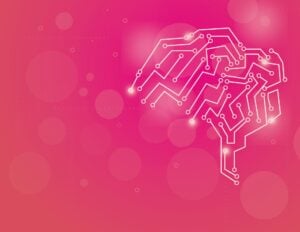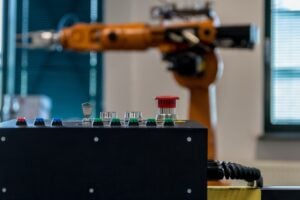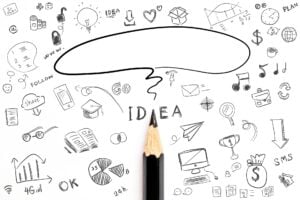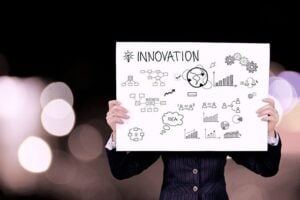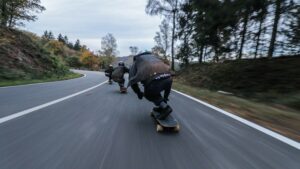KEY QUOTES
- “Innovation is expected now to be a performance function.”
- “The real magic will happen when AI and human brain work together… we cannot either give everything to AI or totally keep AI outside of the picture and say we will do all the thinking because that’s not the world we are living in.”
- “People really don’t buy products, right? They buy experiences. Really what they buy is they buy a feeling.”
FULL SESSION SUMMARY
The R&D, Product Development, Experience & Design Track at FEI25 provided a rich tapestry of insights for innovation experts and corporate changemakers, emphasizing the transformation of innovation from a siloed function into a core driver of business strategy and revenue growth. Sessions explored methodologies for front-end innovation, the strategic use of AI, cultivating future talent, and deeply understanding consumer needs.
The Rise of Growth Innovation: From Cost Center to Revenue Driver
This session asserted a fundamental shift in the corporate landscape: innovation is no longer merely a cost center or a tangential activity but must directly contribute to revenue growth. The speaker highlighted that executives are increasingly prioritizing new sources of revenue growth over digital transformation, underscoring the urgent need for innovation to become a “performance function.” The session introduced the concept of “Growth Innovation,” which demands explicit alignment of innovation activities with short, mid, and long-term revenue streams. A key takeaway was the critical importance of transparently linking innovation projections to actual financial outcomes, as many companies quietly admit a disconnect between their Wall Street projections and real-world results. This calls for innovation teams to share the same growth goals as business units and to develop robust strategies for capturing market value.
AI as a Thinking Partner: Enhancing Innovation and Creativity
This session explored the evolving role of Artificial Intelligence, urging attendees to view AI not merely as a tool for efficiency but as a collaborative thinking partner. The speaker introduced the ACT (Analyze, Collaborate, Test) framework and the Five Lenses Prompting Method to help innovators leverage AI to expand perspectives and enhance creativity. The distinction between AI as a GPS (tool) versus a travel companion (thinking partner) underscored the shift from rote assistance to nuanced, dialogue-driven collaboration. The session emphasized that the ability to ask good, well-thought-out questions is paramount for extracting meaningful insights from AI models. Furthermore, it highlighted the emerging trend of “agentic AI” and encouraged participants to proactively develop a mindset that embraces AI as a collaborative teammate while maintaining essential human oversight and critical evaluation. The ultimate message was about fostering a symbiotic relationship between human intelligence and AI for collective innovation.
Disrupting From Within: Vision, Strategy & Roadmap
Marci Ruman from Kimberly Clark shared her extensive experience in R&D, emphasizing that innovation requires a clear distinction between vision (the “why”), strategy (the “how”), and roadmap (the “what and when”). Her session underscored that consumers ultimately buy experiences and feelings, not just products, urging innovators to focus on understanding ideal consumer experiences rather than incremental improvements to existing offerings. This philosophy led her team to develop disruptive innovations, even in mature categories. The session highlighted the need for a balanced innovation portfolio that includes both sustaining existing businesses and pursuing disruptive opportunities. Overcoming organizational barriers and resource constraints was a recurring theme, with Marci advocating for a proactive mindset (“Why not?”) and encouraging individuals at all levels to take initiative to drive change.
Improving Innovation Impact: The Front-End Innovation Spiral
Milan Ivosevic presented the “Front End Innovation Spiral,” a structured, iterative methodology designed to maximize innovation impact by improving the efficiency of the front end of innovation. The core idea is to process a large number of ideas quickly through a series of rapid cycles, evaluating each concept against technical feasibility, customer desirability, business viability, and scalability. This lateral thinking approach encourages teams to combine, cross-pollinate, kill, or pivot ideas rapidly, rather than getting bogged down in analysis paralysis or over-investing in a few concepts prematurely. The session highlighted that no idea emerges from the front end in its original raw form; successful innovation is a result of continuous iteration and intelligent pivoting. The goal is to identify a few strong “bets” for further investment by holistically and iteratively refining ideas.
Revolutionizing Product Innovation through Radical Consumer Empathy
This session, featuring Johnsonville and Quester, showcased how deep consumer empathy, particularly through Jobs-to-be-Done (JTBD) theory, can lead to breakthrough innovations. Johnsonville discovered their summer sausage was only fulfilling a fraction of its potential jobs, leading to the breakthrough of sliced summer sausage, which became the fastest-growing brand in its category by expanding usage occasions. The partnership with Prodigy Works further illustrated how diverse thinking, including that of Mensa members, can unlock solutions to long-standing innovation challenges. The session emphasized that consumers “hire” products to do a job in their lives, and understanding these jobs—and the tensions surrounding them—is crucial for identifying unmet needs. It highlighted the power of asking “why” repeatedly to uncover the true motivations and desires behind consumer behavior.
Sowing the Seeds of Future Growth with Tomorrow’s Innovation Leaders
This panel discussion focused on building thriving innovation ecosystems through collaboration between universities, corporations, and nonprofits, exemplified by the Richmond, Virginia, ecosystem. Panelists from CarMax, Capital One, and UNOS discussed how programs like VCU’s Master of Product Innovation are creating a pipeline of talent skilled in design thinking, agile principles, and evidence-based product development. The session emphasized the mutual benefits of such partnerships: companies gain access to fresh perspectives and de-risked talent, while students gain real-world experience. Key strategies included hosting open design jams, creating clear access points for students, fostering multi-semester engagement, and encouraging skills-based volunteering. The discussion highlighted the importance of fostering a culture of shared talent and knowledge transfer to cultivate a sustainable innovation workforce.
Claimed vs. Real: Using Social Media to Close the Say-Do Gap
This session addressed the pervasive “say-do gap” in traditional market research, where consumers’ stated intentions often diverge from their actual behaviors. The speakers presented social media as a powerful behavioral research lab. By testing concepts in real-world social media environments, companies can gain authentic insights into how consumers truly engage with products and messages. The case study of the coffee brand Lore demonstrated how this approach helped successfully leverage French heritage in marketing, by measuring actual engagement (pauses, clicks, likes) rather than relying on hypothetical survey responses. The session underscored that social media offers a unique opportunity to gather behavioral metrics and gain media impressions simultaneously, providing a more accurate signal of consumer preference and closing the gap between what people say and what they do.
KEY TAKEAWAYS
- Innovation Must Drive Revenue: Innovation is fundamentally shifting from a cost center to a performance function, requiring direct alignment with revenue goals and transparent measurement of financial impact across short, mid, and long-term horizons.
- AI as a Collaborative Partner: Beyond efficiency tools, AI should be leveraged as a “thinking partner” to expand creative possibilities, demanding sophisticated questioning techniques and human oversight to unlock collective intelligence for innovation.
- Deep Consumer Empathy Fuels Disruption: True innovation stems from understanding consumers’ ideal experiences and the “jobs” they hire products to do, rather than just iterating on existing features, leading to disruptive breakthroughs.
- Agile Front-End Innovation is Crucial: Employing iterative methodologies like the “Front End Innovation Spiral” to rapidly process and refine numerous ideas based on feasibility, desirability, viability, and scalability significantly improves the innovation-to-market impact ratio.
- Cultivate an External Innovation Ecosystem: Building strong, multi-faceted partnerships with academic institutions and community organizations creates a vital pipeline of innovation talent and fosters knowledge transfer, de-risking future investments in human capital.
- Close the “Say-Do” Gap with Behavioral Insights: Traditional research often fails to predict real-world behavior; leveraging social media and other real-time, in-context methods provides authentic behavioral data to validate concepts and inform more effective innovation.
DELIVERY ON EVENT FOCUS: Aligning Innovation with Business Strategy
The R&D, Product Development, Experience & Design Track consistently reinforced the alignment of innovation with business strategy through multiple lenses:
- Financial Imperative: The “Rise of Growth Innovation” session directly positioned innovation as a revenue driver, emphasizing the need for financial accountability and a strategic shift from cost center to performance function.
- Strategic AI Integration: The “AI as a Thinking Partner” session highlighted how AI can be strategically deployed not just for efficiency but to enhance creative thinking and problem-solving, directly contributing to more robust and competitive innovation strategies.
- Consumer-Centric Strategy: Sessions like “Disrupting From Within” and “Revolutionizing Product Innovation” demonstrated how deep consumer empathy and Jobs-to-be-Done theory lead to innovations that genuinely resonate with market needs, thereby ensuring strategic relevance and market success.
- Systematic Approach to Front-End: The “Frontend Innovation Spiral” provided a structured methodology to ensure that early-stage ideas are rigorously evaluated against business viability, desirability, and feasibility, minimizing risk and maximizing strategic fit before significant investment.
- Talent Pipeline as Strategy: “Sowing the Seeds of Future Growth” showcased how building an innovation-ready talent pipeline through academic and community partnerships is a long-term strategic investment, ensuring continuous capability for future growth.
- Real-World Validation: “Claimed vs. Real” underscored the strategic importance of validating concepts with real behavioral data, mitigating the risk of launching products based on inaccurate stated preferences and ensuring market success.
Together, these sessions illustrated that aligning innovation with business strategy requires a holistic approach encompassing financial accountability, advanced technology, deep consumer understanding, rigorous methodology, and strategic talent development.
DELIVERY ON EVENT THEME: Harvesting Innovation and Sowing the Seeds of Future Growth
The track powerfully delivered on the theme of “Harvesting Innovation and Sowing the Seeds of Future Growth” through various aspects:
- Harvesting Innovation:
- Monetizing Innovation: “The Rise of Growth Innovation” explicitly focused on harvesting innovation by treating it as a revenue-generating function, demanding measurable financial returns from innovation efforts.
- Optimizing Existing Products: “Revolutionizing Product Innovation” demonstrated how understanding jobs-to-be-done for existing products (like summer sausage) can unlock new consumption occasions and significantly expand market share, essentially harvesting more value from current offerings.
- Refining Ideas: The “Frontend Innovation Spiral” emphasized efficiently processing and refining a large volume of ideas, ensuring that only the most promising ones are harvested for further development.
- Real-World Validation: “Claimed vs. Real” highlighted how real-time behavioral data helps identify truly viable innovations, ensuring resources are allocated to concepts most likely to succeed in the market.
- Sowing the Seeds of Future Growth:
- Strategic AI Investment: “AI as a Thinking Partner” encouraged exploring emerging AI capabilities and fostering human-AI collaboration, sowing seeds for future creative breakthroughs and competitive advantage.
- Long-Term Vision: “Disrupting From Within” emphasized the importance of a clear vision and a portfolio approach that includes disruptive innovation, actively planting seeds for future market leadership beyond sustaining current business.
- Talent Development: “Sowing the Seeds of Future Growth with Tomorrow’s Innovation Leaders” explicitly detailed how investing in academic partnerships and talent pipelines cultivates the next generation of innovators, ensuring a continuous supply of creative capital.
- Front-End Discipline: The “Frontend Innovation Spiral” focused on building a robust process for early-stage idea generation and selection, which is critical for establishing a sustainable pipeline of future innovations.
- Deep Empathy for Future Needs: “Revolutionizing Product Innovation” highlighted how deep consumer empathy, including understanding latent needs, allows companies to anticipate and build products for future market demands.
The track collectively articulated a vision where immediate gains from innovation (harvesting) are carefully balanced with strategic investments in capabilities, talent, and future-oriented thinking (sowing seeds) to ensure sustainable and impactful growth.
ACTION ITEMS FOR INNOVATION EXPERTS & CORPORATE CHANGEMAKERS
To action the learnings from this track, innovation experts and corporate changemakers should:
- Reframe Innovation as a Revenue Function:
- Explicitly link all innovation activities to current and future revenue streams in communications and planning.
- Implement shared growth metrics between innovation teams and business units to foster joint accountability.
- Conduct an honest assessment of past innovation performance, measuring actual returns against projections to identify areas for improvement.
- Develop a revenue stream decay model for your industry to anticipate when new innovations need to be ready.
- Integrate AI as a Thinking Partner:
- Implement the ACT (Analyze, Collaborate, Test) framework in your next innovation project, explicitly defining AI’s role.
- Train your team on advanced AI questioning techniques, such as the Five Lenses Method, and encourage collaborative dialogue with AI.
- Experiment with diverse AI platforms to understand their strengths for different types of thinking tasks and establish robust validation processes for AI-generated insights.
- Prioritize Deep Consumer Empathy and Jobs-to-be-Done:
- Adopt a structured approach to innovation by clearly separating vision, strategy, and roadmap, focusing on understanding consumers’ ideal experiences and emotional desires.
- Implement Jobs-to-be-Done research to map the full landscape of “jobs” your products are hired for, identifying unmet needs and opportunities for disruptive innovation.
- Practice empathy by truly listening to consumers without predetermined questions and develop storytelling skills to communicate the desired consumer experience.
- Implement a Rigorous Front-End Innovation Process:
- Adopt and adapt an iterative framework like the “Front End Innovation Spiral” to rapidly process and evaluate many ideas, focusing on technical feasibility, customer desirability, business viability, and scalability.
- Replace lengthy evaluation processes with quick spiral cycles, encouraging pivoting and continuous learning rather than deep investment in few ideas prematurely.
- Ensure business viability discussions happen alongside technical development, not as an afterthought.
- Cultivate an External Innovation Ecosystem:
- Map your local innovation ecosystem to identify universities and educational programs focused on innovation, design thinking, and entrepreneurship.
- Host open design jams and create clear access points for students to connect with your company, building a pipeline of future talent.
- Move beyond one-off engagements to sustained, multi-semester collaborations through mentorships, sponsored projects, and advisory board participation.
- Close the “Say-Do” Gap with Behavioral Insights:
- Audit current research methods for potential “say-do gaps” by comparing past predictions with actual market performance.
- Pilot social media testing and other real-time, in-context research methodologies alongside traditional methods to gather authentic behavioral data.
- Develop more engaging, realistic stimuli for concept testing that better represent how consumers will encounter products and messaging in real life.
- Incorporate behavioral metrics into innovation evaluation processes, moving beyond stated preferences.
Contributor
-
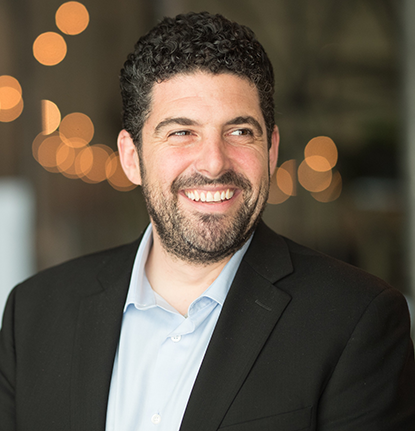
Seth Adler heads up All Things Insights & All Things Innovation. He has spent his career bringing people together around content. He has a dynamic background producing events, podcasts, video, and the written word.
View all posts












